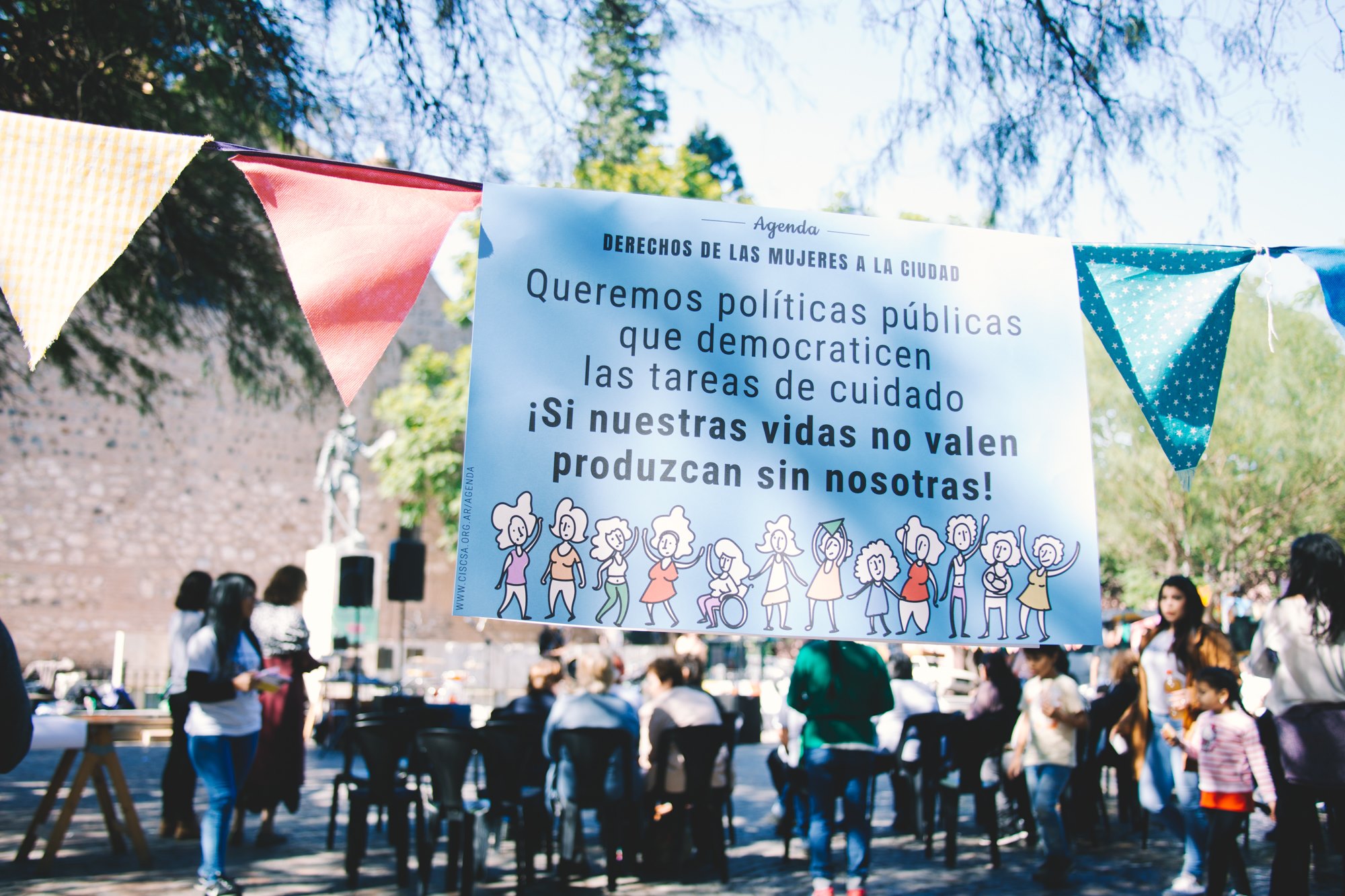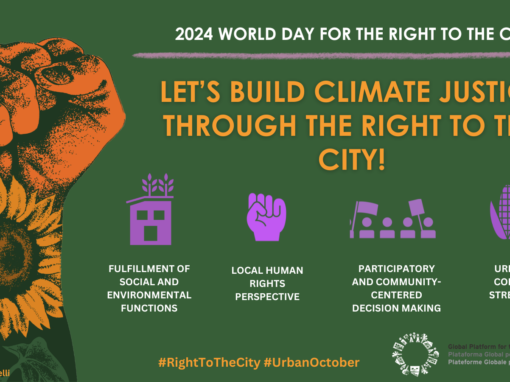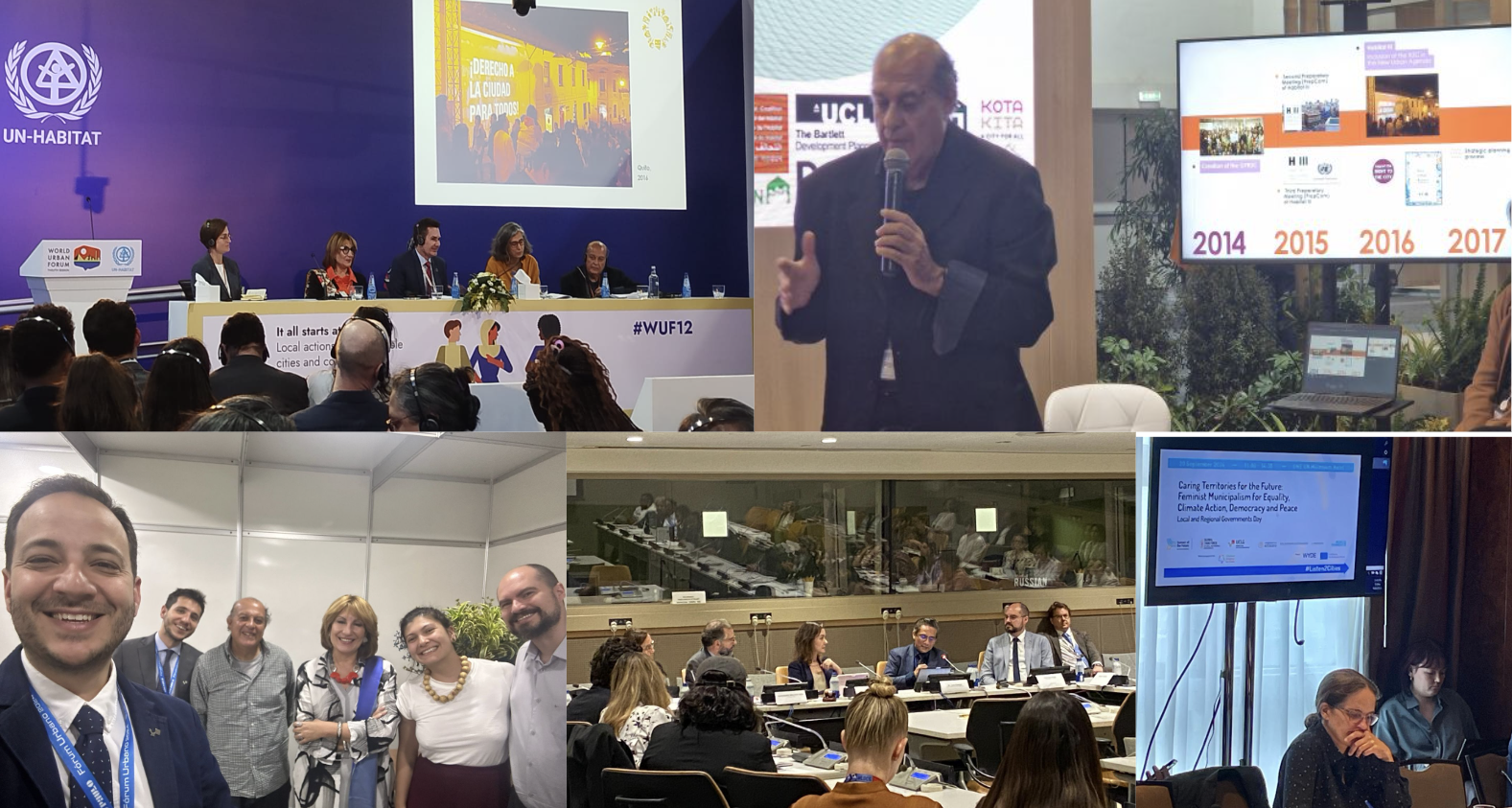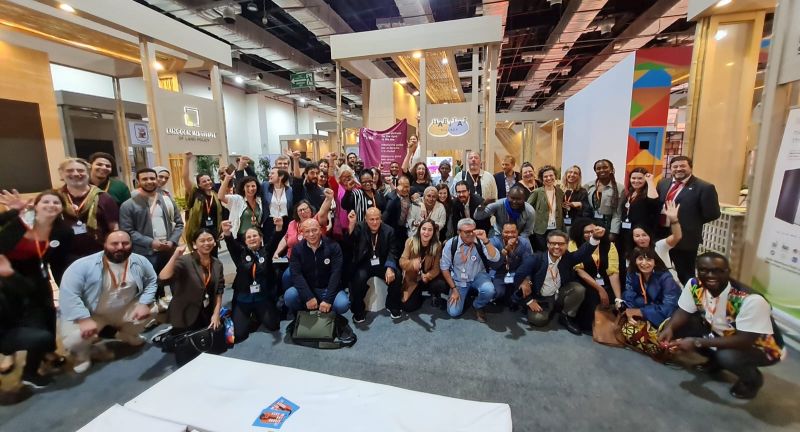
Photo : Bahía Flores for CISCSA
I want to contribute with 4 main points in relation to today’s topics: violence against women and their health is part of the Right to the City and Human Rights.
Women’s right to the city and to diversity is political, and implies the unveiling of power conflicts, of domination and subordination, of omissions that give account of the patriarchal and colonial constructions that have become more acute in the neo-liberal society of the ownership of goods and people.
In times of epidemics and uncertainty, violence against women breaks records, women are locked up with their abusers. At the same time it is mostly women who are in the front line of the healthcare crisis.
The social humanitarian consensus is absolute, in the face of the pandemic the people are the focus. However, “the people” is a neutral category, insufficient to think about the diversity of society. This neutrality that we have been questioning from the women networks and the feminist movement demands that policies be thought of in a feminist key in order to put inequality and diversity at the centre of the emergency agenda. And within it, women and their intersections, and to understand that this pandemic is not the same for everyone.
Never before the relationship between health and habitat conditions has been more evident than in this epidemic that challenges us locally and globally.
In spite of the conceptual advances produced by feminism and women’s organizations, the Latin American Women and Habitat Network, WICI, Huairou Commission and others, on the Right to the City for Women, the dominant theoretical productions and political actions insist on thinking of cities in terms of “neutrality”, invisibilizing and subordinating subjects.
- At least two major omissions that are closely linked to health in the COVID-19 epidemic must be accounted for. The first omission is to make subjects invisible under the neutrality of actions and policies. At least two conditions are necessary for the analysis:
- Recognition of the great gaps in inequality and the understanding that this pandemic is not the same for everyone; that it is decisive to incorporate inequalities into the centre of emergency agendas and actions;
- Focus on diversity and inequality, on the recognition of different identities, dissenting bodies, the LGBTQ population. Centrally, on women and the differences that cross them: race, ethnicity, education, condition of place/migrant where they live, ages, others. All as intersectional.
- This pandemic is expressed with more virulence in the cities and even more so in the large conurbations where we are part of the urban fabric of obscene inequalities, where we are part of the social and diverse fabric, in the North and in the South. Fragmented and unequal cities, in which the territories of poverty extension present themselves with deteriorated habitat conditions, which expose the population to greater vulnerabilities in the face of the pandemic. To stay at home you have to have a home. To wash your hands often you need access to drinking water. And this is not the condition of most people.
- The invisible care that most women take. Women make up more than 70% of health workers everywhere. The managers of neighbourhood canteens, they are the caretakers par excellence of children, older adults, and people with disabilities. At home, women are the primary caregivers for children, the elderly and people with disabilities. This situation is aggravated in the homes under the sole responsibility of women, which continue to grow and are more than 30% on average in Latin America and most of them are under the line of poverty or indigence. Homes that have more than twice as many children as those in the top quintiles, in which the number of dependents is growing. In these caregiving conditions, it is necessary to recognize the differentiated use of time by women and men. Time is the most scarce good in women’s lives.
- The most critical issue in women’s lives, the one that hinders their autonomy, the one that weakens and frightens them, the one that takes away their self-esteem, is the gender violence. Violence as a central dimension of life in cities and the greatest limit to people’s freedom. Today there is concern about the increase in violence that particularly affects women in these times of COVID-19. Without a pandemic, women were already denouncing, and never enough, private and public violence. Today, violence against women is a record-breaking problem, with those who abuse and violate them locked up. Social isolation aggravates situations of gender violence. Women, children and older adults are at greater risk, as is diversity in closed environments. Violence that increases in crisis situations.
Outside, in public spaces, feminicide, in Argentina 23 murders in 30 days. Growing and complex violence of different types and origins, affecting the right to life of women. Bodies that are not recognized as equal and must be disciplined (Rita Segato (1) , 2018), women’s bodies, racialized bodies, diverse bodies. The silent city, due to the necessary social isolation, allows listening: in the building, in the neighborhood, there is a greater clarity of sounds, violence can be heard. So promote solidarity alert, zero tolerance to violence. Ferocious violence that reaches feminicide, the greatest expression of patriarchy and ownership.
These four central considerations are expressed at different scales of territories, which are necessary to recognize and which account for territorial injustices (2). These are: those of body territory, this our first territory, bodies in dispute the first territory on which to decide, of identities and subjectivities that must be respected. And also the home territory, neighborhood territory and city territory. Each one with its complexities, does not allude to static and divided categories, but to a relation of interdependence, crossed by a multiplicity of intersections in the multiple defined identities defined identities of sexuality or raciality, age, disability, among others. Each scale constitutes a type of territory strongly in dispute.
I close by affirming that violence is a public health problem, that the epidemic has brought to light the obscene inequalities resulting from a patriarchal culture and coloniality that persist in the racialized, impoverished, and discriminated bodies that skew the lives of women. The capitalist, patriarchal, colonial, racist vision wants to discipline them by seeking to weaken resistance.
Decades of neoliberalism, of authoritarianism, of churches becoming political parties, focused on demonizing the advances and rights won by feminism. Resistances and resiliencies in emergencies and crises empower them and transform established power relations.
Note by Ana Falú, Working Group Women Gender and Diversity of the Global Platform for the Right to the City in the Assemblies of the PGDC: Right to the City facing COVID-19
————————————————————————————————————————————————————–
(1) Segato, Rita Laura. Contra-pedagogías de la crueldad (Contra-pedagogías de la crueldad). Buenos Aires: Prometeo Libros, 2018. 142 pp.
(2) An example of this is the Seminar-Workshop Women and Cities. [IN] Territorial Justice (2017, 2018, 2019). Organized by CISCSA/Articulación Feminista Marcosur www.ciscsa.org.ar/seminario-taller-2019. The contribution of other entities such as the Gender and Women’s Group of the GPR2C, the International Networks of the Huairou Commission and the Women and Habitat Network Latin America, Col-lectiu Punt 6 and others should also be rescued in order to contribute to these agendas.




